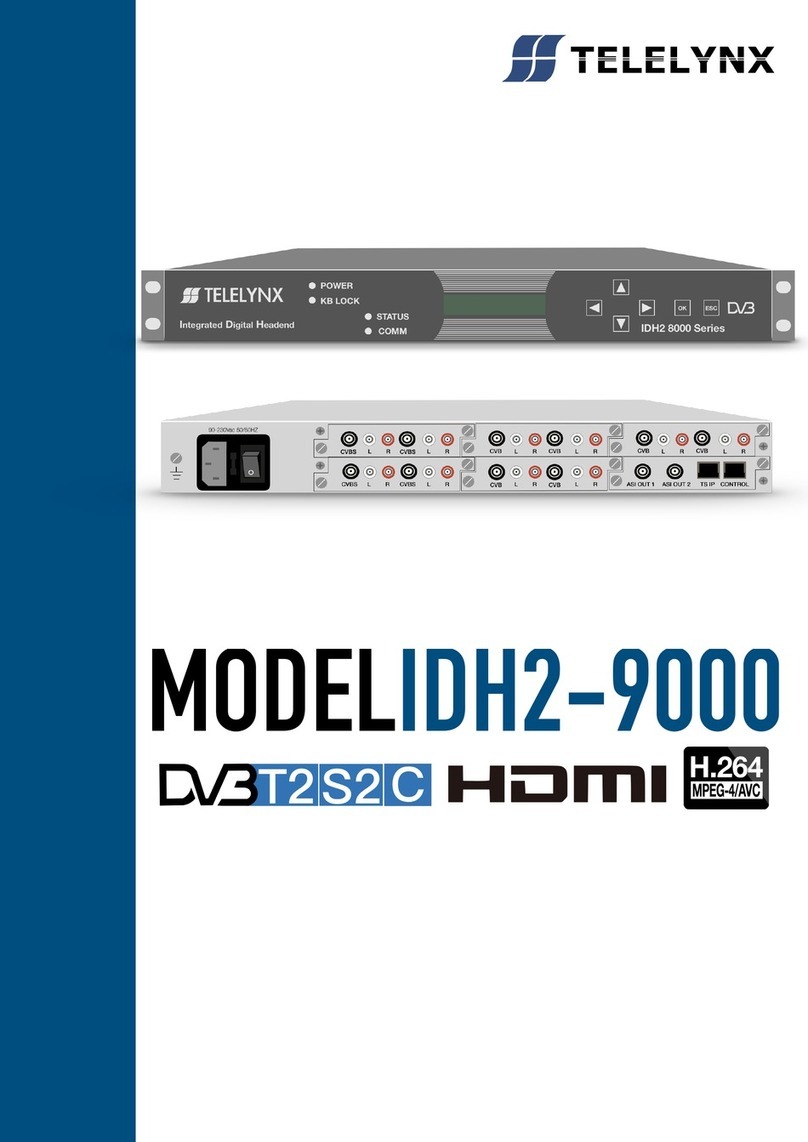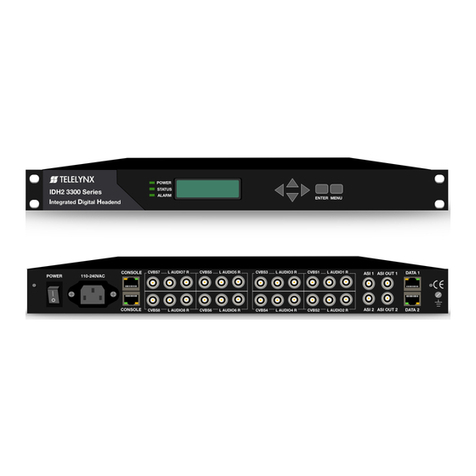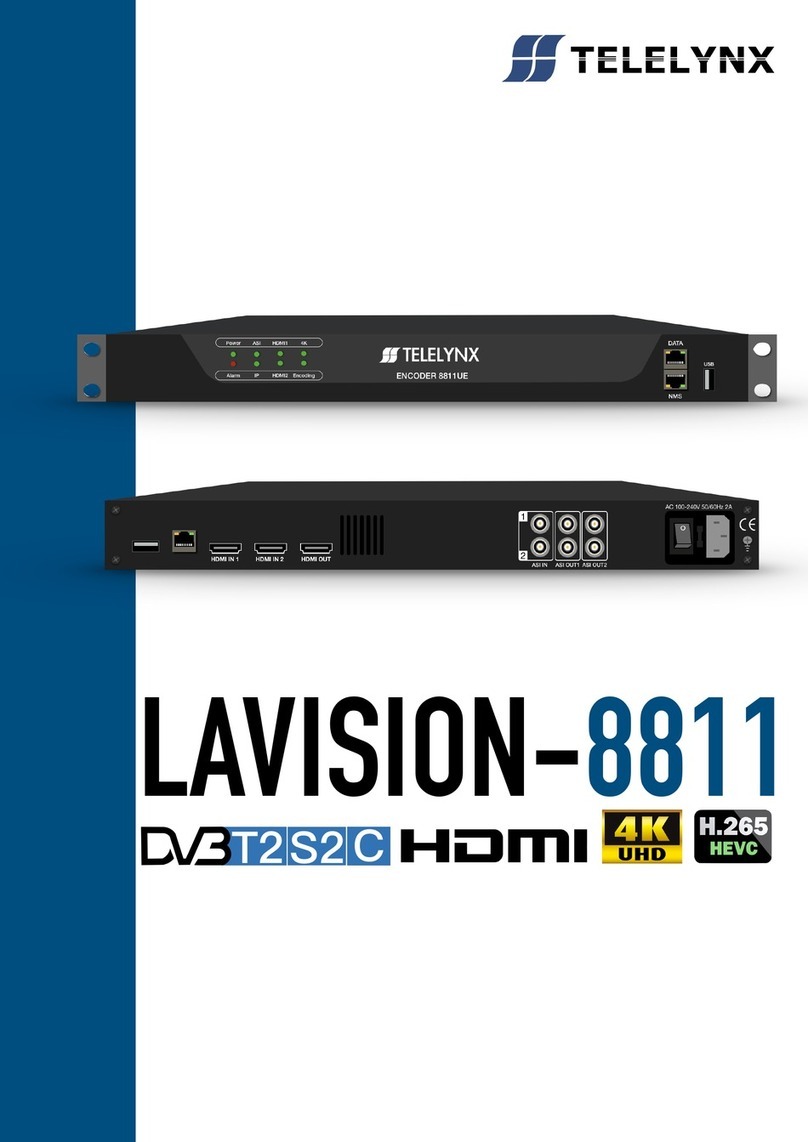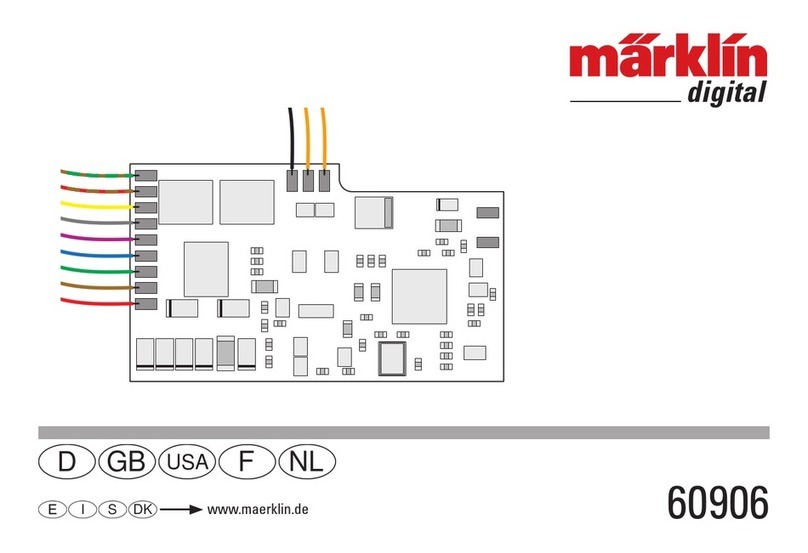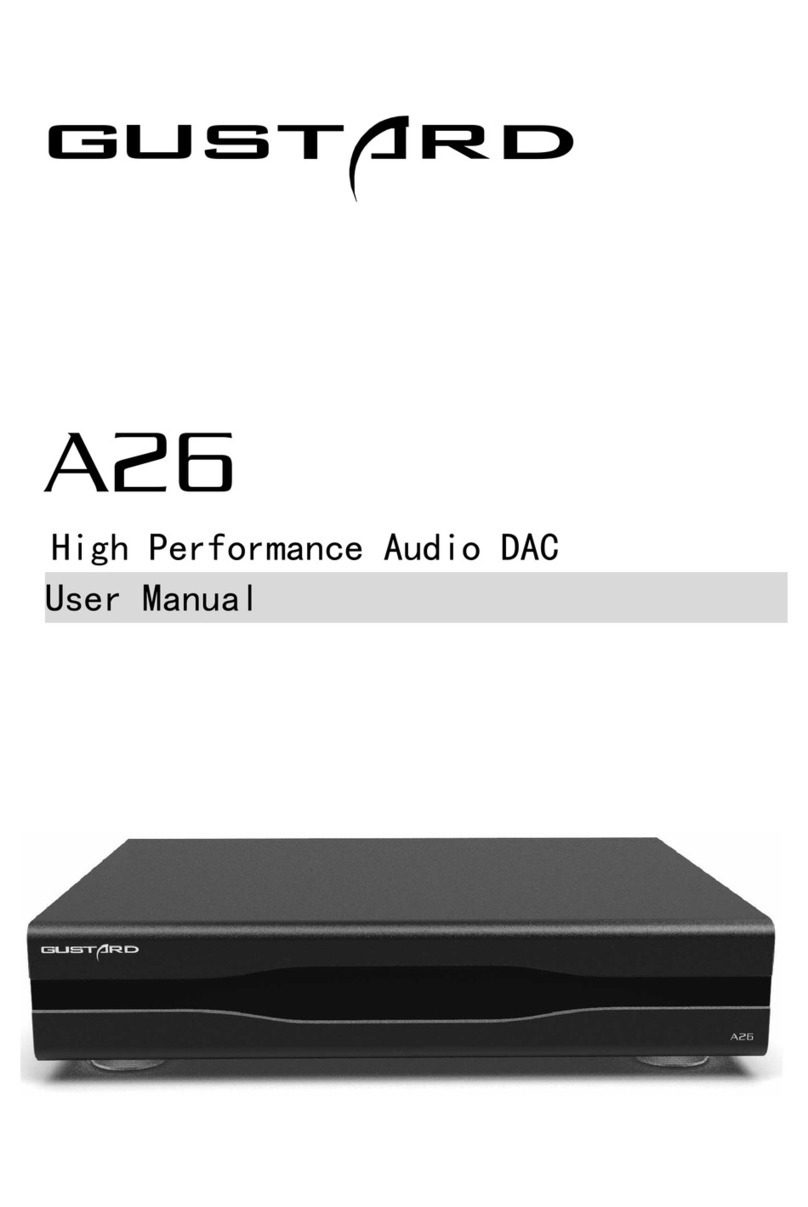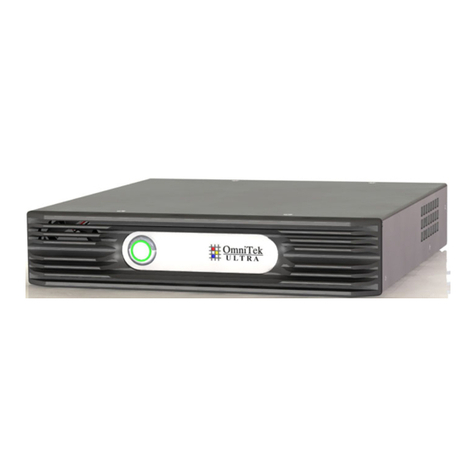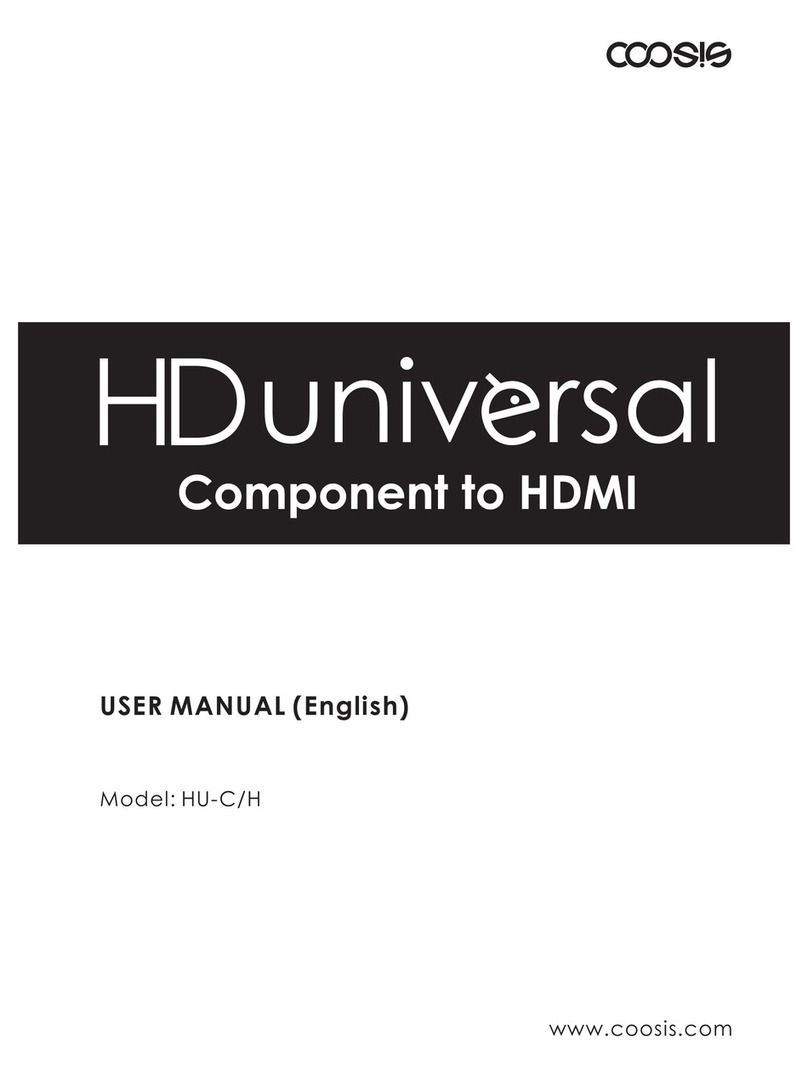TELELYNX IDH-9001 User manual

MODEL IDH-9001

Single Channel H.264 HD Encoder
User’s Guide

Copyright
© Rich Right Technology Limited Sep 26, 2011
All rights reserved. No part of this document can be copied, reproduced or translated.
It should not be recorded, transmitted or stored in a retrieval system without the prior
written consent of Rich Right.

Table of Contents
1. Introduction...............................................................................................................................1
2. Products Illustration..................................................................................................................2
2.1 The front panel:...................................................................................................................2
2.2 The rear panel:.....................................................................................................................3
2.3 Installation...........................................................................................................................4
3. Operation Menu ........................................................................................................................5
3.1 Menu Structure....................................................................................................................5
3.2 Menu Definition..................................................................................................................7
3.2.1 Enc1 Setting.............................................................................................................7
3.2.2 Enc2 Setting (Optional)............................................................................................8
3.2.3 Enc3 Setting (Optional)............................................................................................8
3.2.4 Enc4 Setting (Optional)............................................................................................8
3.2.5 MUX Setting (Optional)...........................................................................................8
3.2.6 IP1 Setting................................................................................................................9
3.2.7 IP2 Setting (Optional) ..............................................................................................9
3.2.8 IP3 Setting (Optional) ..............................................................................................9
3.2.9 IP4 Setting (Optional) ............................................................................................10
3.2.10 IP5 Setting (Optional) ..........................................................................................10
3.2.11 Host IP Setting......................................................................................................10
3.2.12Advanced Setting .................................................................................................11
4. Operation.................................................................................................................................12
4.1 Operation via keyboard.....................................................................................................12
4.2 Operation via Web Manager..............................................................................................13
4.2.1 System Information........................................................................................................13
4.2.2 System Setting................................................................................................................14
4.2.3 Video Setting..................................................................................................................14
4.2.4Audio Setting..................................................................................................................15
4.2.5 TS IP Setting ..................................................................................................................16
4.2.6 Host IP Setting ...............................................................................................................16
5. Technical specification............................................................................................................17
5.1 Surrounding specification .................................................................................................17
5.2 Mechanical standard..........................................................................................................17
5.3 Input interface...................................................................................................................17
5.4 Output interface.................................................................................................................18
5.5 Video encoding..................................................................................................................18
5.6 Ethernet.............................................................................................................................18

1
1. Introduction
The RichRight H.264 HD encoder is the newest HDTV product of Compunicate
which adopts H.264/MPEG4 - AVC high quality compression technology. It is applied
to perform DVB DTV broadcast system, MMDS, DVB data broadcast system, Video
on demand system, and so on. It supports HD SDI video and audio input, HDMI
video and audio input. For channel 1, it also supports analog YPbPr, SD CVBS video
input, stereo analog audio input. And it supports IP encoding output. It improves the
encoding efficiency to satisfy the diverse needs of operators.
User can browse the basic information and modify all parameters via the front
panel or the Head-end Manager.

2
2. Products Illustration
2.1 The front panel:
1 -Indicator of Power
2 -Indicator of Keyboard Lock
3 -Indicator of Status
4 -Indicator of Network Communication
5 -LCD display
6 -Direction Key
↑Up or Increase
↓Down or Decrease
←Left
→Right
7 -Ok to confirm
8 -ESC to exit or cancel

3
2.2 The rear panel:
1 -CVBS input port
2 -Y input port
3 -Pb input port
4 -Pr input port
5 -Audio input port (Left)
6 -Audio input port (Right)
7 -SDI/HD-SDI/3G-SDI input port
8 -HDMI input port
9 -ASI OUT A
10 -ASI OUT B
11 -RJ45, 100 Base-T, TS output port
12 -RJ45, 100 Base-T, Ethernet connection port
13 -Power socket and switch, Optional.
14 -Power socket and switch
15 -Grounding point
16 -SDI/HD-SDI input port, Optional.
17 -HDMI input port, Optional.
18 -SDI/HD-SDI input port, Optional.
19 -HDMI input port, Optional.
20 -SDI/HD-SDI input port, Optional.
21 -HDMI input port, Optional.

4
2.3 Installation
1、This product should be mounted horizontally,and grouding or earthing
mounted devices should be maintained reliably.
2、Exactly connect your power supply, signal source and other equipments to this
product.
3、If you want to use the Head-end Netmanager, Please connect RJ45 to your
network.
4、Please check out the standard of power before you power on this product.

5
3. Operation Menu
3.1 Menu Structure
The under chart illustrates the device menu tree. You can browse and operate all
of the parameters via keyboard of the front panel.
Note: Enc2-Enc4 Setting and IP2-IP4 Setting are optional.

6
Name & V1.00
SN:114122109999
IP1 Setting
Packet Size 1-18
System BitRate 1-21
PMT PID 1-12
PCR PID 1-13
VID PID 1-14
AUD PID 1-15
Service ID 1-16
TS ID 1-17
Service Name 1-19
Provider Name 1-20
Audio Input 1-8
Audio Gain 1-11
Audio BitRate 1-9
Audio Format 1-10
Video Input 1-1
Video Resolution 1-2
Max BitRate(VBR) 1-5
Video Bit Mode 1-3
Video BitRate 1-4
Min BitRate(VBR) 1-6
GOP Structure 1-7
IP5 Setting
IP4 Setting
IP3 Setting
IP2 Setting
Enc1 Setting
Enc2 Setting
Enc3 Setting
Enc4 Setting
Source IP 6-2
Source Netmask 6-3
Source Gateway 6-4
Source Mac 6-5
Destination IP 6-7
Destination Port 6-8
Source 6-1
Source Port 6-6
Protocol 6-9
FEC Col Offset 6-10
FEC Col NA 6-11
IGMP 6-12
Host IP Setting
Host IP 11-1
Host Netmask 11-2
Host Gateway 11-3
Host MAC 11-4
Server Address 11-5
MUX Setting
Source 5-1
Bitrate 5-2
Packet Size 5-3
TS ID 5-4
Advanced Setting
Save Default 12-1
Load Default 12-2
Restore Initial 12-3
Codec Version 12-4

7
3.2 Menu Definition
3.2.1 Enc1 Setting
“Video Input 1-1”: User can choose the video input port. There
are 4 types of input ports: CVBS, SDI, YPbPr and HDMI.
Note: For Enc2-4, there are only 2 types of input ports: SDI and HDMI.
“Video Resolution 1-2”: User can only browse the video resolution.It
supports 8 types: 1920x1080x60i/50i, 1440x1080x60i/50i, 1280x720x60p/50p,
720x480x60i, 720x576x50i.
“Video Bit Mode 1-3”: User can choose the video bit mode. There
are 2 types of bit mode: CBR and VBR.
“Video BitRate 1-4”: User can configure the video average bitrate,
from 1000Kbps to 25000Kbps.
“MAX BitRate(VBR) 1-5”: User can configure the video max bitrate,
from 1500Kbps to 25000Kbps. It is valid only in VBR mode and it must more than
the video average bitrate.
“MIN BitRate(VBR) 1-6”: User can configure the video min bitrate,
from 500Kbps to 20000Kbps. It is valid only in VBR mode and it must less than the
video average bitrate..
“GOP Structure 1-7”: User can choose the video GOP structure.
There are 3 types of GOP structure:IBBP, IPPP and IBP.
“Audio Input 1-8”: User can choose the audio input port. There
are 3 types of input ports: Analog, HDMI and SDI.
Note: For Enc2-4, there are only 2 types of input ports: HDMI and SDI.
“Audio Gain 1-9”: User can configure the audio gain. There are
5 types of audio gain: -12db, -6db, 0db, 6db and 12db.
“Audio BitRate 1-10”: User can choose the audio bitrate. There are 6
types of bitrate: 64Kbps, 128Kbps, 192Kbps, 256Kbps, 320Kbps and 384 Kbps.
“Audio Format 1-11”: User can choose the audio format. By now,
there is only 2 type of audio format for normal version: MPEG-1 LayerII and SPDIF
AC3. The option of SPDIF AC3 is only valid in digital mode. For AAC version, there
is one more option: AAC-LC.
“PMT PID 1-12”: User can configure the output PMT PID. The
range is from 50 to 8190.
“PCR PID 1-13”: User can configure the output PCR PID. The
range is from 50 to 8190.
“VID PID 1-14”: User can configure the output video PID. The

8
range is from 50 to 8190.
“AUD PID 1-15”: User can configure the output audio PID. The
range is from 50 to 8190.
“Service ID 1-16”: User can configure the output service id. The
range is from 1 to 65535.
“TS ID 1-17”: User can configure the Transport Stream ID.
The range is from 1 to 65535.
“Packet Size 1-18”: User can choose the output packet size. There
are 3 types: 188, 204 FEC ON and 204 FEC OFF.
“Service Name 1-19”: User can only browse the service name. It
only support English name via the front panel.
“Provider Name 1-20”: User can only browse the service provider
name. It only support English name via the front panel.
“System Bitrate 1-21”: User can configure the system bitrate of this
encoder channel. The range is from 2000 to 25000kbps.
3.2.2 Enc2 Setting (Optional)
The menu is similar to Enc1 Setting.
3.2.3 Enc3 Setting (Optional)
The menu is similar to Enc1 Setting.
3.2.4 Enc4 Setting (Optional)
The menu is similar to Enc1 Setting.
3.2.5 MUX Setting (Optional)
“Source 5-1”: User can select any encoder channel to output.
If any channel is displayed in this menu, it means the channel would be multiplexed.
“Bitrate 5-2”: User can configure the system output bitrate.
The range is from 2000 to 65000kbps.
“Packet Size 5-3”: User can choose the system output packet
size. There are 3 types: 188, 204 FEC ON and 204 FEC OFF.

9
“TS ID 5-4”: User can configure the Transport Stream ID.
The range is from 1 to 65535.
Note: For single channel encoder, there is no this menu.
3.2.6 IP1 Setting
“Source 6-1”: User can select the output source. There are 6
types of souce: none, enc1, enc2, enc3, enc4 and mux. None means disable this ip
output port.
“Source IP 6-2”: The local IPAddress setting.
“Source Netmask 6-3”: Subnet Mask setting.
“Source Gateway 6-4”: Default Gateway setting.
“Source MAC 6-5”: Physical Address setting. It is a unique value
in any network.
“Source Port 6-6”: The local IP port setting.
“Destination IP 6-7”: Destination IP Address setting. The device
will auto send the TS data to this IP address.
“Destination Port 6-8”: Destination Port setting. The device will auto
send the TS data to this port.
“Protocol 6-9”: There are 3 types of protocol: UDP, RTP and
Pro-MPEG. If the protocol is Pro-MPEG, the next 2 menu would be valid.
“FEC Col Offset 6-10”: It is valid only the protocol is Pro-MPEG. By
now, the range is from 4 to 16.
“FEC Col NA 6-11”: It is valid only the protocol is Pro-MPEG. By
now, the range is from 4 to 16.
“IGMP 6-12”: Default is disabling. It’s useless in normal
network.
3.2.7 IP2 Setting (Optional)
The menu is similar to IP1 Setting.
3.2.8 IP3 Setting (Optional)
The menu is similar to IP1 Setting.

10
3.2.9 IP4 Setting (Optional)
The menu is similar to IP1 Setting.
3.2.10 IP5 Setting (Optional)
The menu is similar to IP1 Setting.
3.2.11 Host IP Setting
“Host IP 11-1”: The host IPAddress setting.
“Host Netmask 11-2”: Subnet Mask setting.
“Host Gateway 11-3”: Default Gateway setting. If your server
whitch installed the head-end manager and the device are not in the same subnet, the
device need transmit any data to server through the gateway.
“Host MAC 11-4”: Physical Address setting. It is a unique value
in any network.
“Server Address 11-5”: Server IP Address setting. The device will
auto send the alarm info to this server.
*Host IP means control port.
For examples:
1. The device and the server are in the same subnet:
Device 192.168.1.100 Server 192.168.1.10
2. The device and the server are not in the same subnet:

11
Device 192.168.1.100 Server 192.168.0.10
Gateway 192.168.1.1/192.168.0.1
3.2.12 Advanced Setting
“Save Defualt 12-1”: Save the current configuration as default
configuration.
“Load Default 12-2”: Recall the default configuration whitch has
been saved.
“Restore initial 12-3”: Recall the original configuration whitch was
configured by manufactory.
“Codec Version 12-4”: User can only browse the internal codec
version.

12
4. Operation
4.1 Operation via keyboard
Turn on the power switch after checking the system connections. The following
information will be displayed on screen:
Model name & V2.10
SN:114122100999
The SN is the unique serial number of this product. The following chart displays the
definition of SN.
SN:114122100999
Device Type
Hardware Version Software Version
Device ID
The initial status of the keyboard is locked, and you have to unlock it before operation.
To unlock it, please press "OK" key, "OK" key, "ESC" key and "ESC" key sequentially
and promptly. The keyboard may also be locked after it has not been operated for a
certain period of time.
After unlocking, press "↑", "↓" keys to move around the main menu. Press "←","→"
keys to move around the sub-menu. Press "OK" key to enter the selected sub-menu.
Press "OK" key to modify parameters of the seleced item.
Avaliable values of parameter will be flashing and can be selected by "←", "→" keys
when you modify the item. In case of a continually changeable parameter, use "←", "
→" keys to move the cursor and press "↑", "↓" keys to change the value. Press
"ESC" key to give up the modification.
After modification, press "OK" key to confirm it.

13
4.2 Operation via Web Manager
Type the encoder’s host IP address, the main frame will be showed in IE.
4.2.1 System Information
There is some basic system information in main frame, showed as Figure.

14
4.2.2 System Setting
System parameters include output system bitrate, packet length, basic PIDs,
service name, service provider name, TS ID and service ID.
Service name and service provider name support up to 40 characters.
4.2.3 Video Setting
Video parameters include input port, resolution info, encode mode, GOP structure,
and average bitrate. And resolution is only for display (up to 1080p), could not be
edited.
There are 4 types of ports in video input list: CVBS, YPbPr, HDMI and SDI (also
supports HD-SDI/3G-SDI)
There are 2 types of video mode: CBR and VBR. When user selects CBR, the
video average bitrate means the real video bitrate. When user selects VBR, the video
average bitrate means the average video bitrate. At the same time, max bitrate and
min bitrate are enabling.

15
4.2.4 Audio Setting
Audio parameters include input port, bitrate, audio encode format, audio bitrate
and audio gain.
There are 3 types audio input ports: Analog, HDMI and Embedded SDI.
Audio encode format only supports MPEG-1 Layer II and AC-3 pass-thru. For
AAC version, it also supports AAC-LS
.

16
4.2.5 TS IP Setting
This setting is only for TS IP output port.
Stream IP: Local IP Address.
There are 2 types protocol: UDP and RTP.
Destination IP & Port: Destination IP address and IP port.
IGMP: The default parameter is Disable.
4.2.6 Host IP Setting
This setting is only for manager port.
Host IP: Local IPAddress.
Table of contents
Other TELELYNX Media Converter manuals
Popular Media Converter manuals by other brands

Converters.TV
Converters.TV 15353 Operation manual
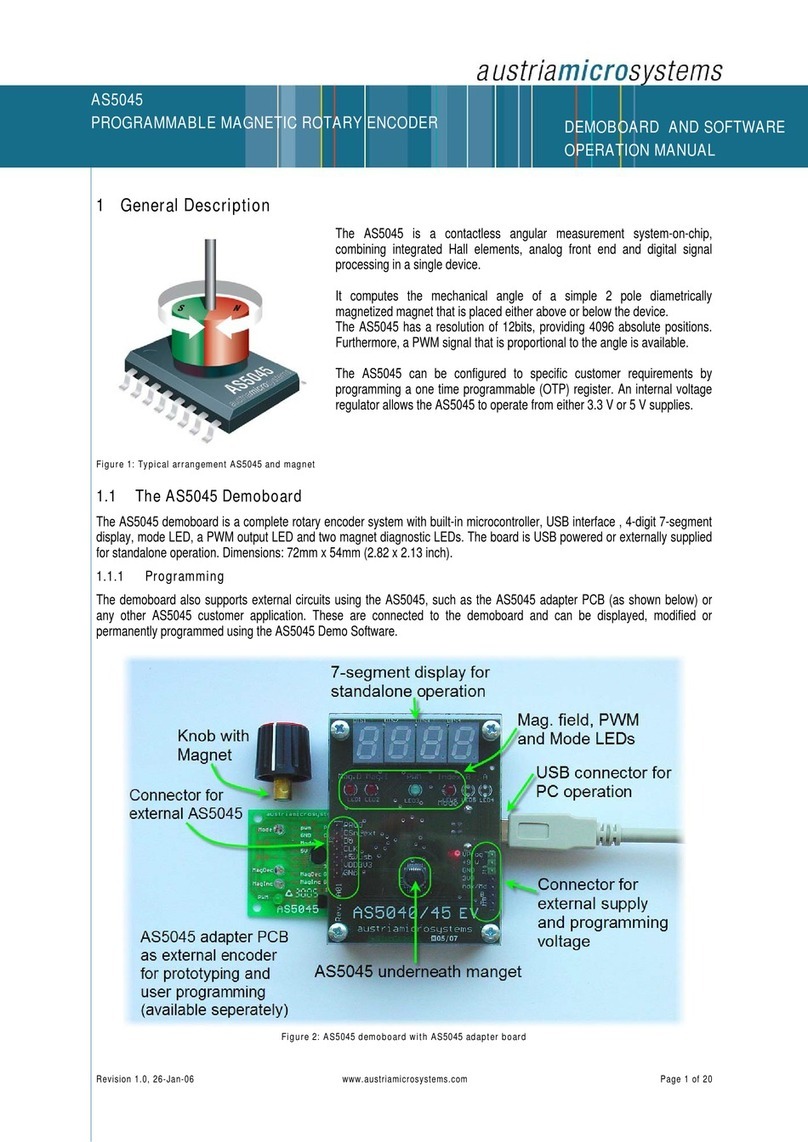
austriamicrosystems
austriamicrosystems AS5045 Operation manual
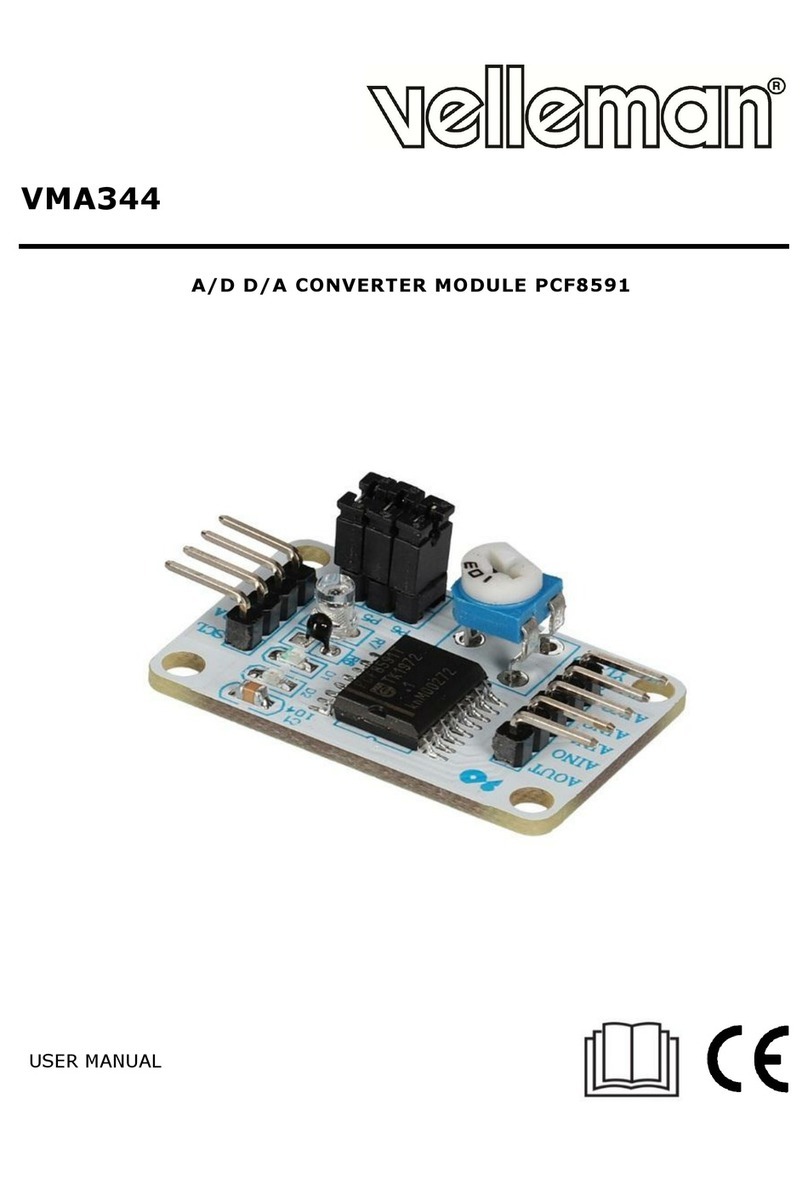
Velleman
Velleman VMA344 user manual
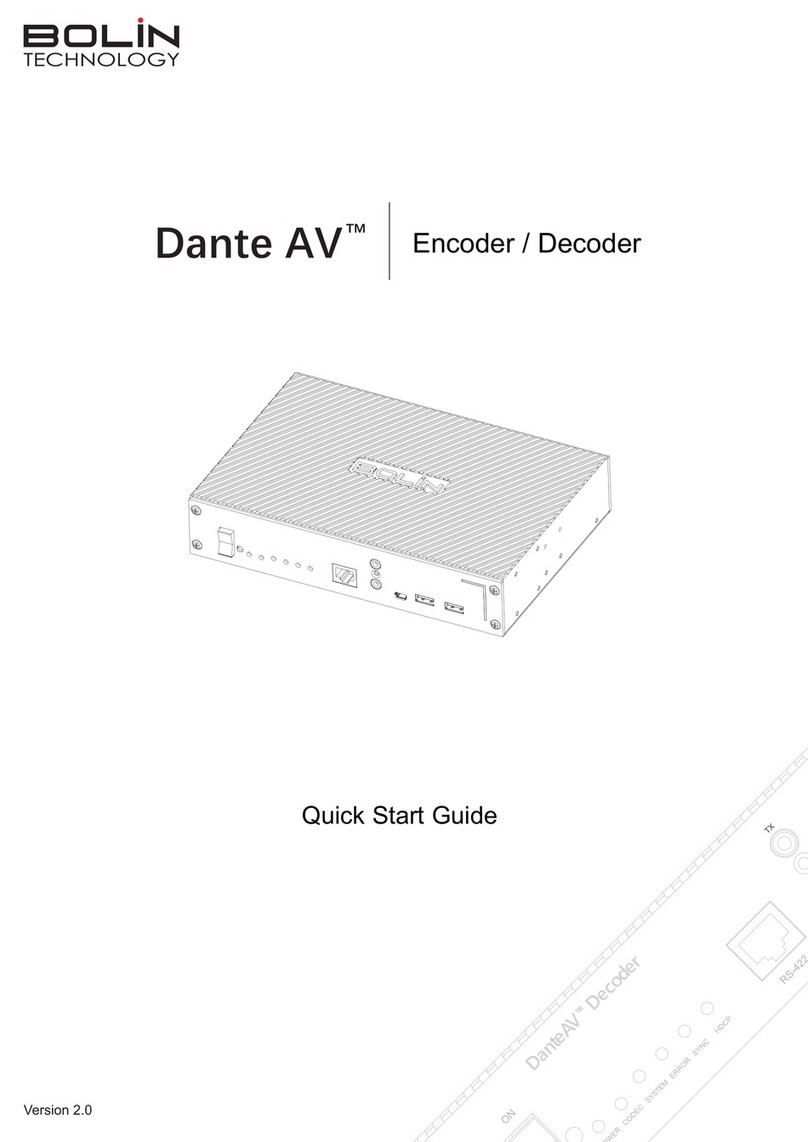
Bolin Technology
Bolin Technology Dante AV D20H quick start guide
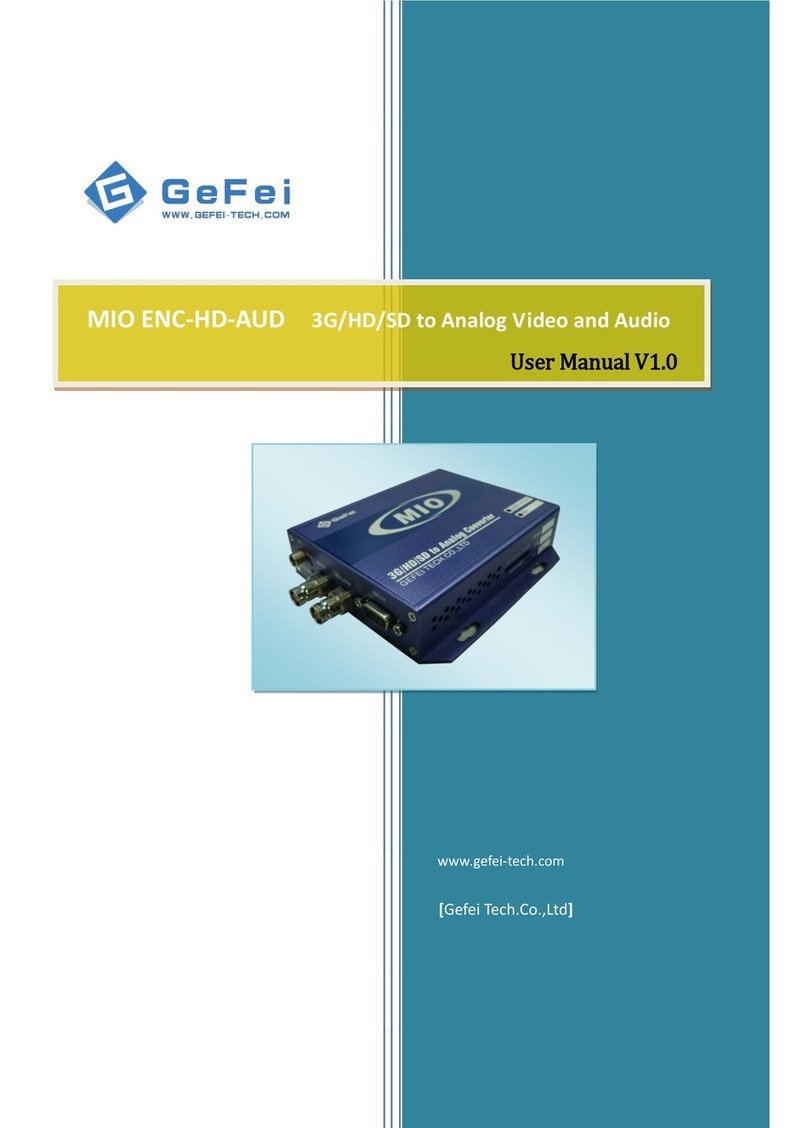
Gefei
Gefei MIO ENC-HD-AUD user manual
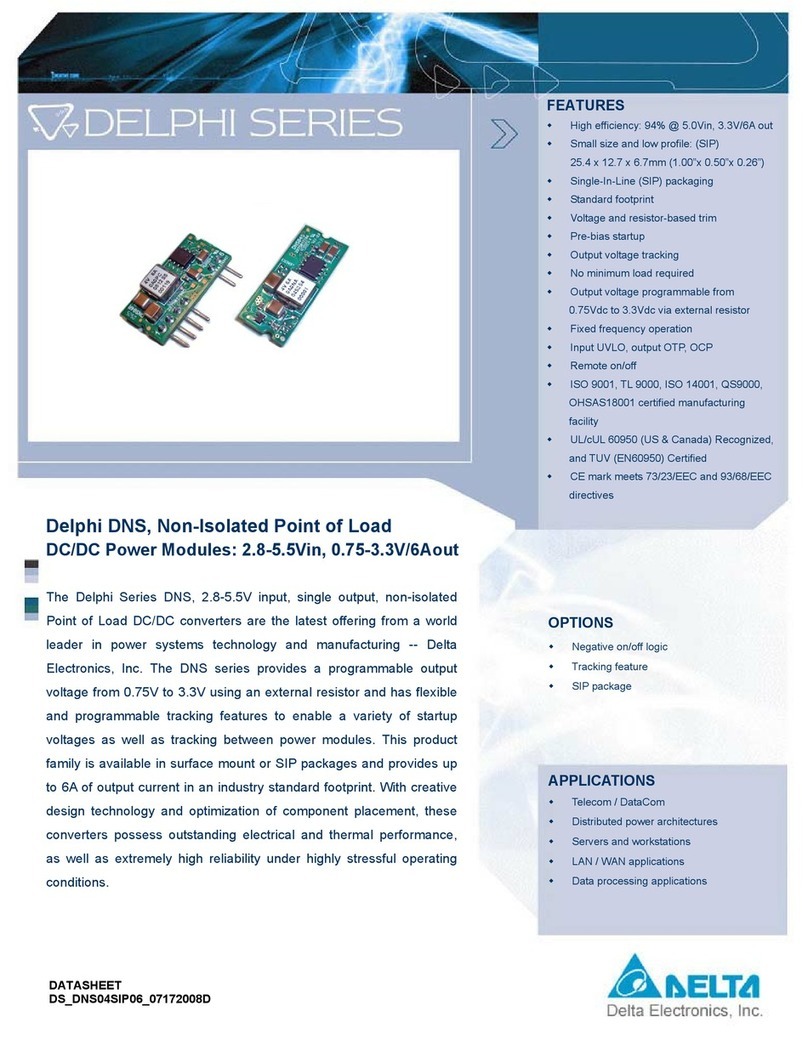
Delta Electronics
Delta Electronics Delphi Series DNS datasheet
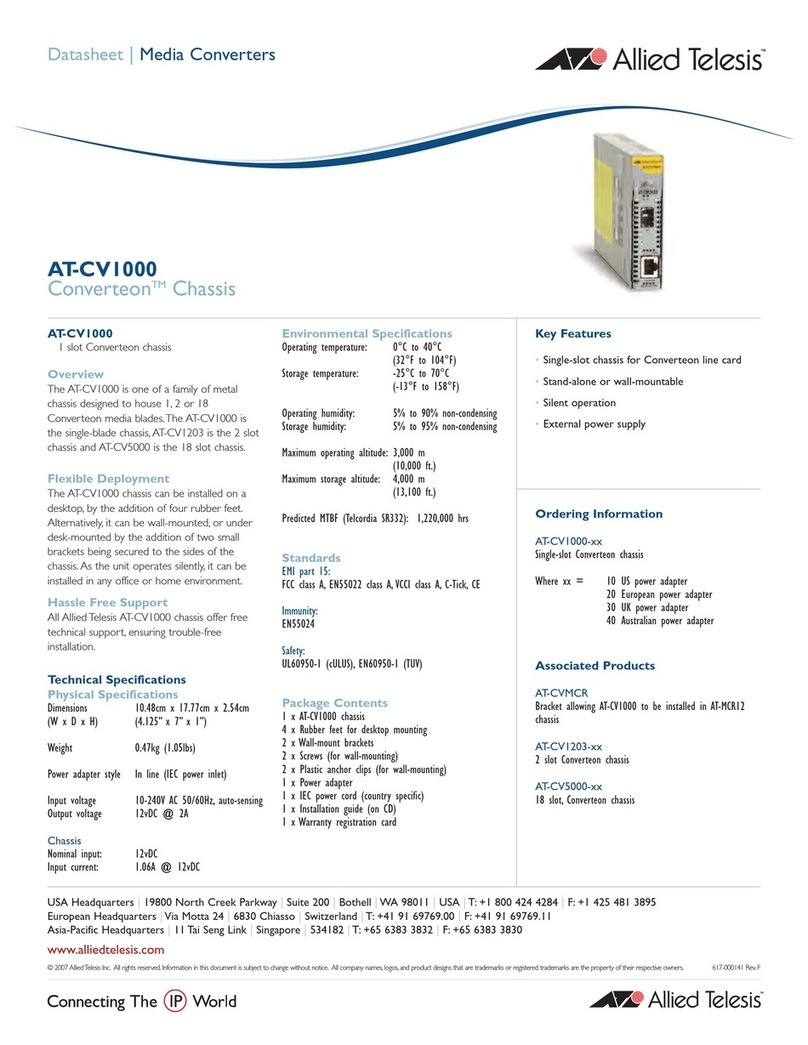
Allied Telesis
Allied Telesis Converteon AT-CV1000 datasheet
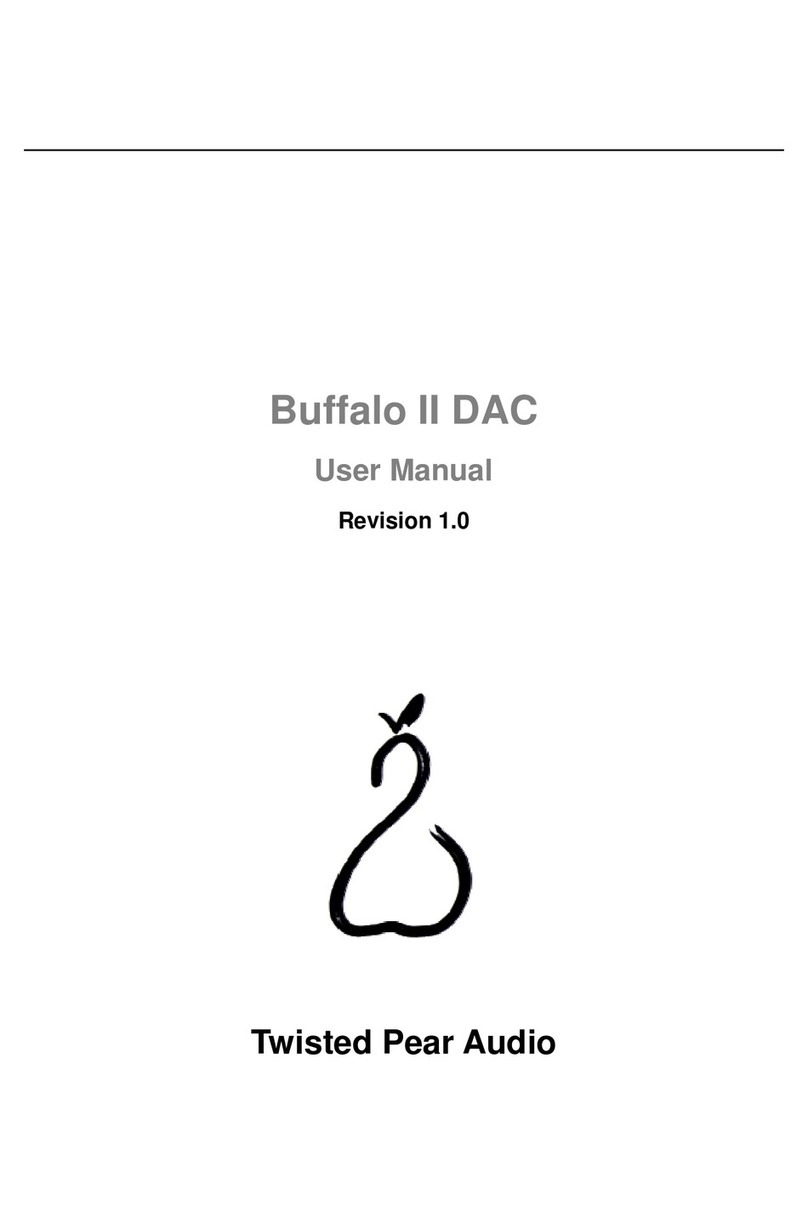
Twisted Pear Audio
Twisted Pear Audio Buffalo II user manual
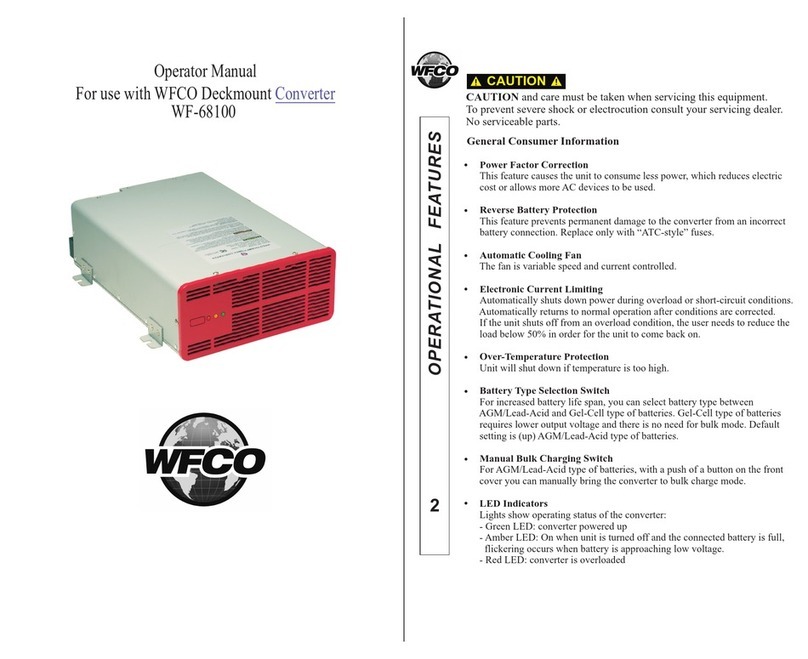
WFCO
WFCO WF-68100 Series Operator's manual
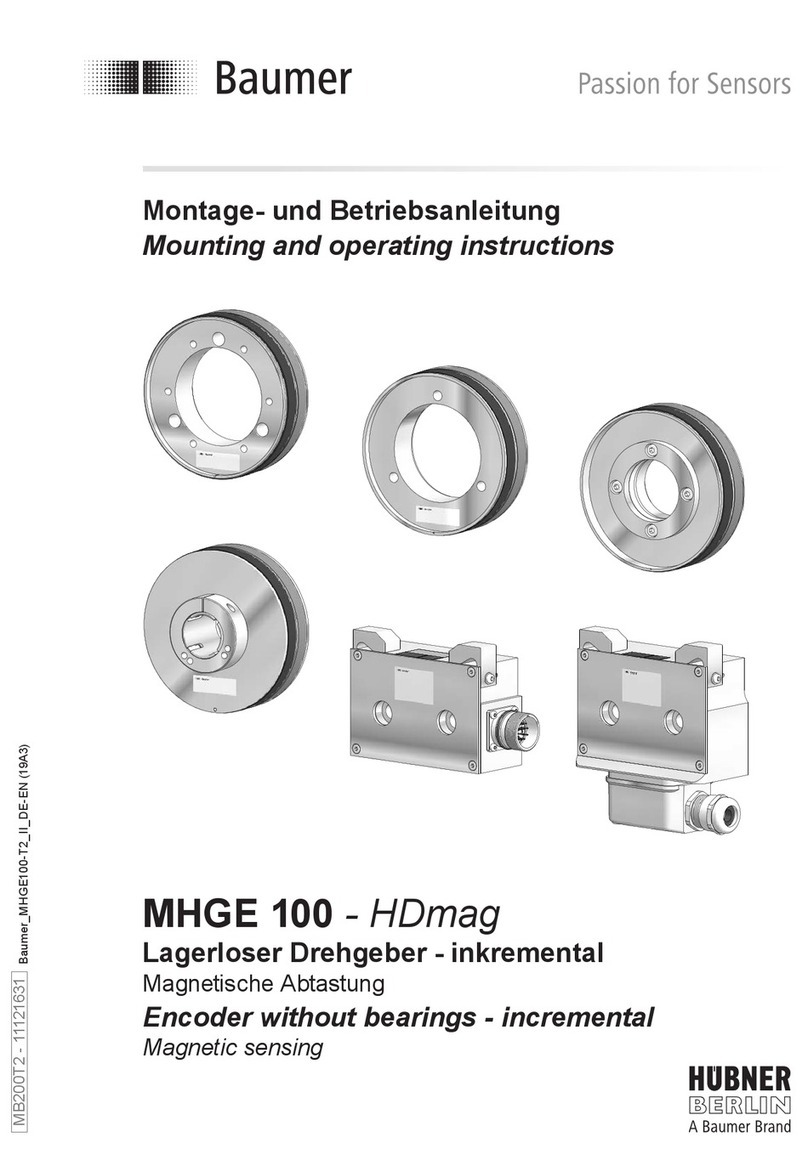
Baumer
Baumer HUBNER BERLIN HDmag MHGE 100 Mounting and operating instructions
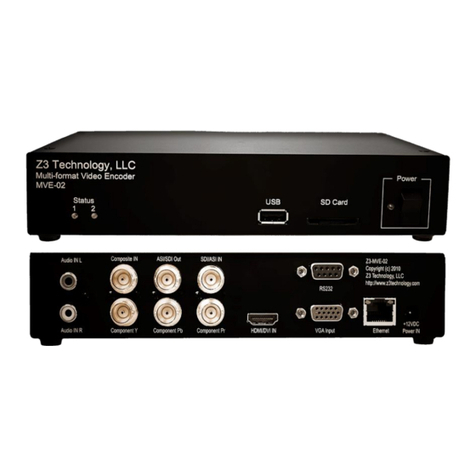
Z3 Technology
Z3 Technology Z3-MVE-02 User instructions
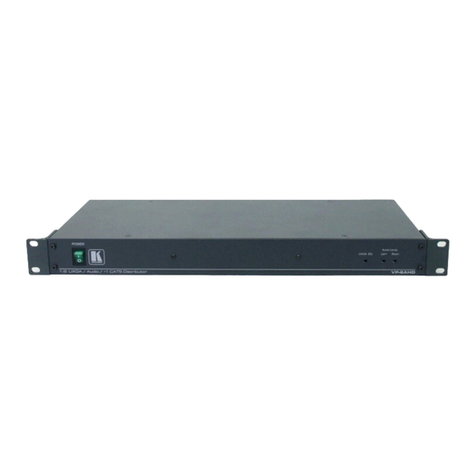
Kramer
Kramer VP-6AHD user manual
